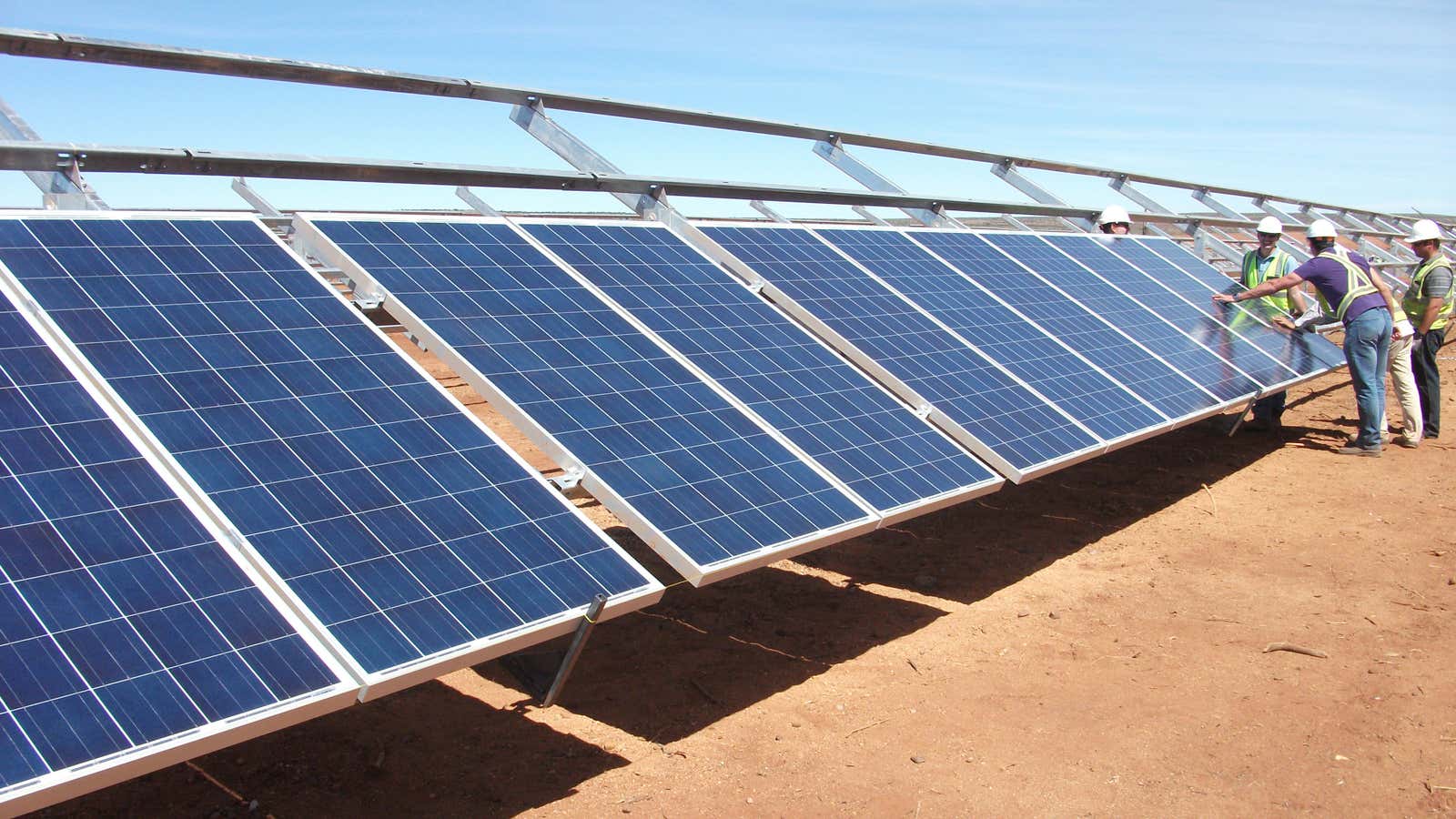There’s a place where a developer can propose, finance and build a big solar power project in a matter of months. That place is not California, Germany or China. It’s South Africa. And the country’s embrace of renewable energy has attracted investors like Google, which today said it is helping finance a 96 megawatt (MW) photovoltaic power plant in the Northern Cape province.
South Africa had “the highest growth in clean energy investment in the world last year,” Rick Needham, Google’s director of energy and sustainability, noted in a blog post about the Jasper Power Project. Google has put more than $1 billion into renewable energy, but this is only its second overseas venture. (The company put $5 million into a German photovoltaic power plant in 2011.) The search giant’s stake in Jasper is relatively small—103 million rand, or $12 million of the $260 million total cost—but the solar power station will be one of Africa’s largest, supplying enough electricity to power 30,000 homes.
South Africa aims to install 20,000 MW of renewable energy over the next 15 years. That’s attracted SolarReserve, a California-based startup, which is developing the Jasper project as well as two other 75 MW photovoltaic power plants. “The US market is pretty flat for large scale projects,” SolarReserve chief executive Kevin Smith told Quartz.
Jasper is a win for China as well. Yingli, the world’s largest photovoltaic manufacturer, will supply solar panels for it.
SolarReserve also has two 100 MW solar thermal power plants in the works in South Africa. Unlike photovoltaic power plants, which deploy thousands of solar panels that directly convert sunlight into electricity, SolarReserve’s solar thermal projects use mirrors to focus the sun on boilers that contain molten salt, to create steam that drives an electricity-generating turbine. The molten salt can also store heat so it can be released to produce electricity at night or on cloudy days, smoothing out the otherwise uneven electricity supply that comes from solar.
The company is building solar thermal projects in California and Nevada in the US, but Smith says extensive bureaucracy and financing requirements mean it can take years to get a power plant online. For instance, developers must find so-called tax equity partners willing to finance a plant in exchange for a 30% federal tax credit given to solar projects. Such deals involve numerous parties and complicated financial engineering. Deals sometimes fall apart after they’ve been approved, because the developers often first win a long-term contract to supply electricity to a utility at a set rate, and only then try to get the financing that will allow them to make a profit.
South Africa, in contrast, offers no subsidies for renewable energy. Developers must have their permits, suppliers and financing lined up, and then submit bids to the South African Department of Energy (DOE), which decides whether to pay the requested rates. Once a bid has been accepted, the developer must start construction in six months.
“You bid the economics that work,” says Smith. “I wish the markets in the US worked as well.”
